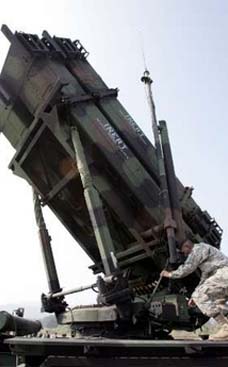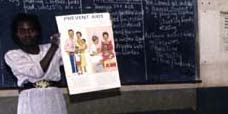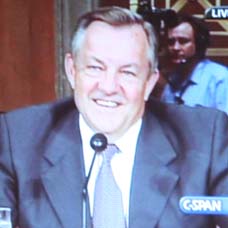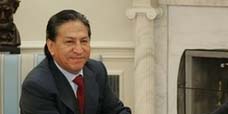2006.10.07: October 7, 2006: Headlines: COS - Philippines: Photography: Lexington Herald-Leader: The photos in Philippines RPCV James Archambeault's Historic Kentucky, the new Archambeault book being released on Thursday, were shot over 30 years
Peace Corps Online:
Directory:
Philippines:
Peace Corps Philippines:
The Peace Corps in the Philippines:
2006.10.07: October 7, 2006: Headlines: COS - Philippines: Photography: Lexington Herald-Leader: The photos in Philippines RPCV James Archambeault's Historic Kentucky, the new Archambeault book being released on Thursday, were shot over 30 years
The photos in Philippines RPCV James Archambeault's Historic Kentucky, the new Archambeault book being released on Thursday, were shot over 30 years

Why are Archambeault's photographs so popular? They are the way we envision our state when we're away from it -- the best days, the kindest light, the most flattering angles. It's not that Archambeault photographs are sentimental. They're quiet and clean and simple -- like Shaker architecture rendered on film.
The photos in Philippines RPCV James Archambeault's Historic Kentucky, the new Archambeault book being released on Thursday, were shot over 30 years
In its best light
Lexington Herald-Leader
October 07, 2006
There is the Kentucky that you and I drive through, and then there is James Archambeault's Kentucky.
Archambeault's looks better.
In Archambeault's photographs, cloud fluff is more nuanced, the grass more velvety, the rough edges smoothed off Kentucky's often harsh, humid, buggy beauty.
Archambeault gets to do what many of us consider a passing fancy: Park a car and go roaming in Central Kentucky farmfields, or the forest bordering the Mountain Parkway. Peek in the windows of decrepit filling stations. Check out the burger-tater tots-Slush Puppy menu at the Creamy Whip in Jamestown. Run a hand over the silvered wood of a tobacco barn.
And Archambeault, 63, knows when a shot works -- really, really works.
'You know when you take it, 99 percent of the time. You know emotionally,' he said. 'A lot of times I almost laugh out loud, I'm so thrilled.'
The photos in James Archambeault's Historic Kentucky, the new Archambeault book being released on Thursday, were shot over 30 years. Archambeault assembled about 1,000 photos, pared them down, looked for the gaps, shot more photos and then pared those down before sending a final 155 photos to his book designer.
'It's my obsession, really, to find and capture beauty,' Archambeault said. 'Some would say that's trite. ... But that's what I do.'
The Archambeault look
In Archambeault's photographs, audio poles at a drive-in near Mount Sterling poke out of the earth like winter paperwhites; a weathered Grant County farmer peers into the distance, sitting at a kitchen table adorned with a can of coffee and a Wiedemann beer; a Ballard County shopkeeper in a housedress and sneakers shells beans; a light fog reflects the image of High Bridge in Jessamine County onto the glassy surface of the Kentucky River.
All of those photos are part of a Kentucky that history is passing by. History, Archambeault says, is 'the emotional trigger' behind historic preservation. Some parts of Kentucky vanish every year -- more mom-and-pop gas stations and fescue seed vendors and Dairy Freezes vanish into strip malls, BP stations with plastic cappuccino and Sonic drive-throughs. Almost nobody thinks to make note of what those vanished bits of Kentuckiana looked like, and how their absence changes the rhythm of life here.
Archambeault does.
Besides photography, Archambeault has several big interests. He also dabbles in real estate, loves reading history and might write a book of poems.
After majoring in journalism at Duquesne University in Pittsburgh, Archambeault did a stint in the Peace Corps. He came to Kentucky to work for United Press International in Louisville.
And stayed.
Just as it has become difficult to imagine a Kentucky without the late historian Thomas Clark, it is tough to imagine the great Kentucky photographs without Archambeault.
Why are Archambeault's photographs so popular? They are the way we envision our state when we're away from it -- the best days, the kindest light, the most flattering angles. It's not that Archambeault photographs are sentimental. They're quiet and clean and simple -- like Shaker architecture rendered on film.
And then there's the back story implied in each photograph.
Said Archambeault: 'I like my photographs to tell a story, often within one frame.'
He pointed out a 1984 photograph in Historic Kentucky: a battered house in Owen County sits in a winter landscape with a pile of coal out front. To some this would seem bleak: a drafty house in a cold season. But Archambeault is a glass-half-full kind of guy. He sees the coal and firewood and infers that people inside have enough to keep warm.
The photograph keeps you guessing. Who lives there? Do they stay warm? Do they stay in just one room, huddled by a stove, praying for spring?
High times
First, Archambeault wants you to know that he does not have stilts, a small airplane or a parasail. That breathtaking shot of Frankfort, with the sun just warming the Capitol dome and the river's morning glow -- a photo that makes Frankfort look like some kind of fairy kingdom -- was taken from the Frankfort Cemetery just above Kentucky's most influential valley town.
Most of Archambeault's photos are shot close to the road on which he arrived -- and on which he clocks 40,000 to 50,000 miles a year.
Archambeault does not stage his shots, and he does not try, say, to make the ground look more velvety than it is.
There are constraints, even for photographers who have become a state institution. Summer is Archambeault's least favorite season for photography; he calls it boring. Spring and autumn have more color, and winter has snow -- ever more infrequent in Kentucky, Archambeault notes -- and that chilly winter light.
Archambeault also likes snow. When he and his wife, Lee, were visiting Key West in February 1998, they saw a newspaper photograph of a man in Lexington shoveling his snow.
Lee turned to her husband and said, 'We're going home, aren't we?'
Archambeault remembers getting some stunning snow photos that week.
He might visit the site of a potential photograph as many as seven times, assessing how light falls around the area, what the area looks like during different seasons, what people or animals pass that way.
Finding the light
He annotates his Kentucky county map book.
He does not fear getting lost, for two reasons: He might find a compelling image, and it is nearly impossible to get thoroughly lost in Kentucky when armed with a map.
He carries no weapons in his travels, preferring to talk himself out of tricky situations with suspicious locals and outraged canines encountered on the way to scouting possible locations.
How do his pictures get that Archambeault look -- the luminous water, unbroken fall forest, shimmering winter wheat?
Archambeault says he doesn't create the look: It exists, and he captures it.
'Nature creates this, I don't. I just record.'
Copyright © 2006 Lexington Herald-Leader, All Rights Reserved.
When this story was posted in November 2006, this was on the front page of PCOL:





Peace Corps Online The Independent News Forum serving Returned Peace Corps Volunteers
 | Harris Wofford to speak at "PC History" series
Senator Harris Wofford will be the speaker at the 4th Annual "Peace Corps History" series on November 16 sponsored by the University of Maryland at Baltimore County (UMBC) and the Maryland Returned Volunteers. Previous speakers in the series have included Jack Vaughn (Second Director of the Peace Corps), Scott Stossel (Biographer of Sargent Shriver), and C. Payne Lucas (President Emeritus of Africare). Details on the time and location of the event are available here. |
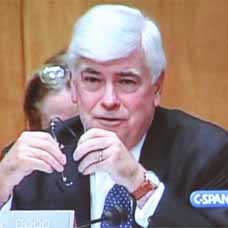 | Chris Dodd's Vision for the Peace Corps
Senator Chris Dodd (RPCV Dominican Republic) spoke at the ceremony for this year's Shriver Award and elaborated on issues he raised at Ron Tschetter's hearings. Dodd plans to introduce legislation that may include: setting aside a portion of Peace Corps' budget as seed money for demonstration projects and third goal activities (after adjusting the annual budget upward to accommodate the added expense), more volunteer input into Peace Corps operations, removing medical, healthcare and tax impediments that discourage older volunteers, providing more transparency in the medical screening and appeals process, a more comprehensive health safety net for recently-returned volunteers, and authorizing volunteers to accept, under certain circumstances, private donations to support their development projects. He plans to circulate draft legislation for review to members of the Peace Corps community and welcomes RPCV comments. |
 | He served with honor
One year ago, Staff Sgt. Robert J. Paul (RPCV Kenya) carried on an ongoing dialog on this website on the military and the peace corps and his role as a member of a Civil Affairs Team in Iraq and Afghanistan. We have just received a report that Sargeant Paul has been killed by a car bomb in Kabul. Words cannot express our feeling of loss for this tremendous injury to the entire RPCV community. Most of us didn't know him personally but we knew him from his words. Our thoughts go out to his family and friends. He was one of ours and he served with honor. |
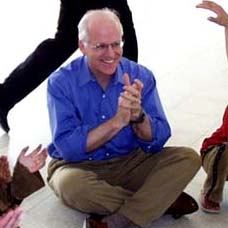 | Chris Shays Shifts to Favor an Iraq Timetable
In a policy shift, RPCV Congressman Chris Shays, long a staunch advocate of the Bush administration's position in Iraq, is now proposing a timetable for a withdrawal of American troops. How Mr. Shays came to this change of heart is, he says, a matter of a newfound substantive belief that Iraqis need to be prodded into taking greater control of their own destiny under the country’s newly formed government. As Chairman of the House Government Reform subcommittee on national security, he plans to draft a timetable for a phased withdrawal and then push for its adoption. A conscientious objector during the Vietnam War who said that if drafted he would not serve, Chris Shays has made 14 trips to Iraq and was the first Congressman to enter the country after the war - against the wishes of the Department of Defense. |
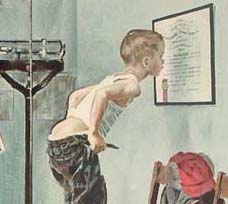 | Peace Corps' Screening and Medical Clearance
The purpose of Peace Corps' screening and medical clearance process is to ensure safe accommodation for applicants and minimize undue risk exposure for volunteers to allow PCVS to complete their service without compromising their entry health status. To further these goals, PCOL has obtained a copy of the Peace Corps Screening Guidelines Manual through the Freedom of Information Act (FOIA) and has posted it in the "Peace Corps Library." Applicants and Medical Professionals (especially those who have already served as volunteers) are urged to review the guidelines and leave their comments and suggestions. Then read the story of one RPCV's journey through medical screening and his suggestions for changes to the process. |
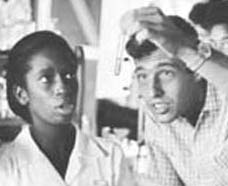 | The Peace Corps is "fashionable" again
The LA Times says that "the Peace Corps is booming again and "It's hard to know exactly what's behind the resurgence." PCOL Comment: Since the founding of the Peace Corps 45 years ago, Americans have answered Kennedy's call: "Ask not what your country can do for you--ask what you can do for your country. My fellow citizens of the world: ask not what America will do for you, but what together we can do for the freedom of man." Over 182,000 have served. Another 200,000 have applied and been unable to serve because of lack of Congressional funding. The Peace Corps has never gone out of fashion. It's Congress that hasn't been keeping pace. |
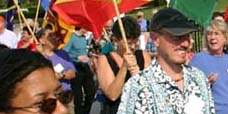 | PCOL readership increases 100%
Monthly readership on "Peace Corps Online" has increased in the past twelve months to 350,000 visitors - over eleven thousand every day - a 100% increase since this time last year. Thanks again, RPCVs and Friends of the Peace Corps, for making PCOL your source of information for the Peace Corps community. And thanks for supporting the Peace Corps Library and History of the Peace Corps. Stay tuned, the best is yet to come. |
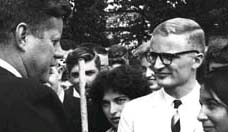 | History of the Peace Corps
PCOL is proud to announce that Phase One of the "History of the Peace Corps" is now available online. This installment includes over 5,000 pages of primary source documents from the archives of the Peace Corps including every issue of "Peace Corps News," "Peace Corps Times," "Peace Corps Volunteer," "Action Update," and every annual report of the Peace Corps to Congress since 1961. "Ask Not" is an ongoing project. Read how you can help. |
Read the stories and leave your comments.

Some postings on Peace Corps Online are provided to the individual members of this group without permission of the copyright owner for the non-profit purposes of criticism, comment, education, scholarship, and research under the "Fair Use" provisions of U.S. Government copyright laws and they may not be distributed further without permission of the copyright owner. Peace Corps Online does not vouch for the accuracy of the content of the postings, which is the sole responsibility of the copyright holder.
Story Source: Lexington Herald-Leader
This story has been posted in the following forums: : Headlines; COS - Philippines; Photography
PCOL34687
36








